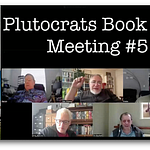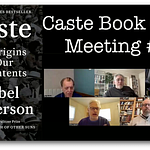This is a re-edit (using Descript) of a video I made in 2020, about developing a discipline of filling in empty nodes in my Obsidian vault. A key element of Descript is that it creates transcripts, so for people who prefer to read or want to highlight, here it is:
Transcript:
Hello again this morning I have begun working on improving my Obsidian graph. I've decided to set myself a daily goal of shifting some of the purple points on the graph that are basically empty notes to yellow ones that have some content in them, and then also connecting them with the appropriate nodes, which would also be helpful.
I guess I've begun calling the small notes that I make points and the bigger ones, nodes. There's really no fixed designation of what's a point and what's a node, of course. I'm not going to impose my own expectations on the front end of what ought to be important. I agree with Sönke Ahrens and Nicholas Luhmann on the idea that the graph itself should be my guide and that I should let it tell me which ideas my interest has actually formed a web around and that interest will be determined by the number of connections. Every idea is possibly central if it demonstrates its centrality by being at the center of one of these webs. Some of my notes, of course, will be data points. Some will be responses to things that I've read, research or reading notes, depending on the terminology that you use.
And still others will be my own ideas, evergreen notes or permanent notes, again, depending on whose terminology you're using. But I think that I'm going to let the same logic apply to all of them and see which ones naturally build clusters around themselves. This process of writing about these topics is going to turn some of my purple points into yellow ones each day.
And I'll probably initially set a modest goal and then try to ramp it up as time permits. It's interesting though that it's also going to create a lot more purple points. For example, I just wrote three paragraphs to fill in the slavery point. The result was six more purple points. the Atlantic slave trade, the Caribbean, sugar plantations, tobacco, cotton, and wage slavery.
I find this pretty interesting. I need to remember, of course, as I review these points like slavery, to tag them with the names of the OERs, like US2 or Modern World History, into which they might fit. I also just did one on Robert Dale Owen, who's a guy who interests me. And this resulted in 11 additional points in the graph. His father, Robert Owen, New Lanark, New Harmony, The Free Inquirer, the paper that he published, Frances Wright, his collaborator, his book, Moral Physiology, the topics of birth control and contraception that he was involved in, and Dr. Charles Knowlton and his book, The Fruits of Philosophy, which was the first major American written book on birth control, which actually got him arrested and jailed. As an aside, while I was working on grabbing some information like the birth date and death date of Robert Dale Owen, I noticed that in the Wikipedia entry, Dr. Charles Knowlton had not been mentioned as another important author of these early books on birth control in America. And because Owen and Knowlton used each other's content in each of the successive editions of their books. I thought this was important to mention. So I went ahead and I edited the Wikipedia entry while I was working on this. I also tagged Franklin Pierce, the Whig president of the United States, that sent Owen to the Kingdom of the Two Sicilies as a minister later in his career.
It'll be interesting and also another indication of my level of interest to see how long it takes for a note to transform from being purple to being yellow. Some of them I'll need to add content to quickly, since I'll be needing them for my OER Obsidian Vaults that I'm going to use with my students. Others may have to wait until I have enough time to tackle them. And still others, like Franklin Pierce for instance, might just find themselves ignored. It'll be another interesting way for me to understand my own interests. So that was just a brief glimpse of what I'm working on this morning. I hope people found that interesting.
Stay tuned for more, and thanks for watching. I'll see you again next time.













Share this post